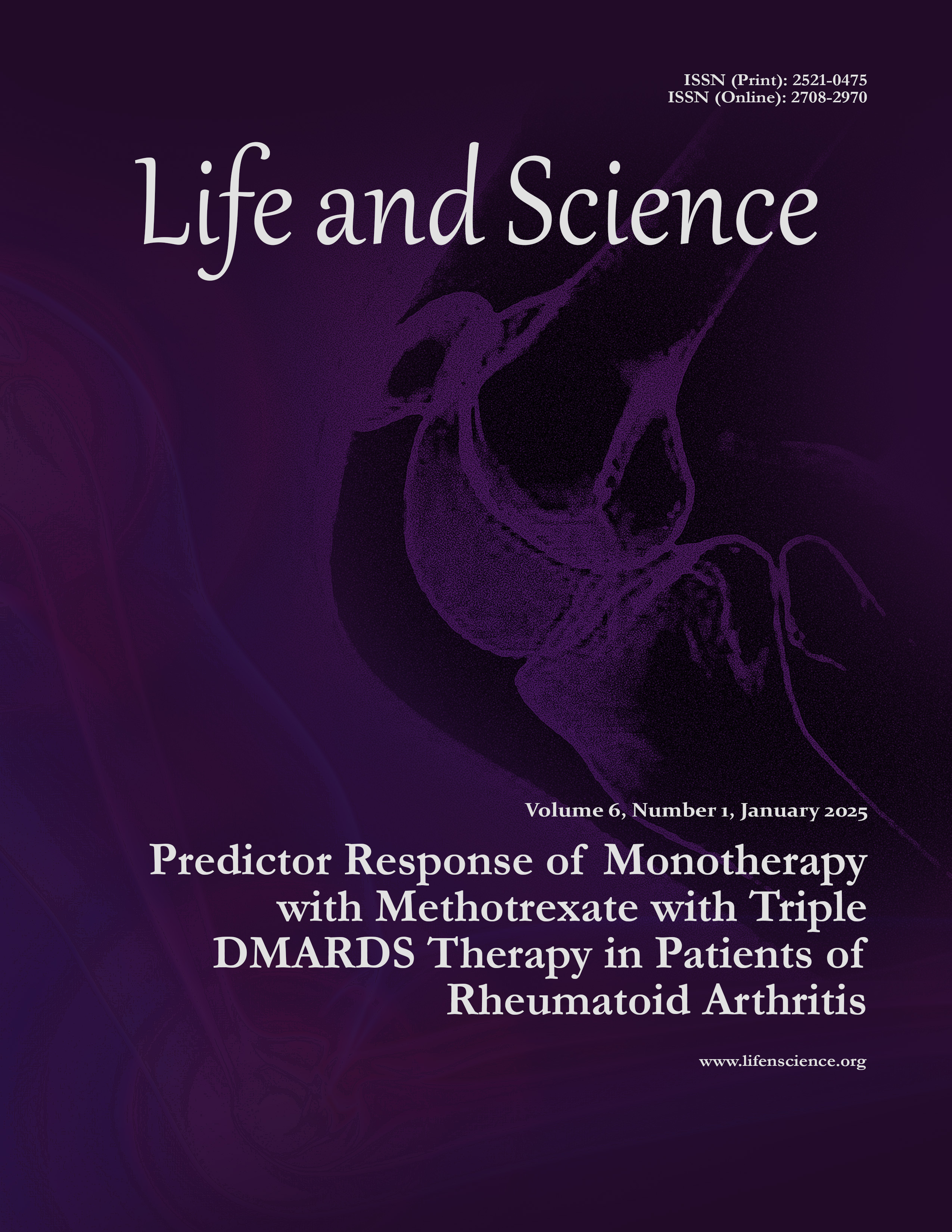Correlation of Ultrasonographic Findings in Renal Parenchymal Disease with Creatinine Levels at a Tertiary Care Setting in Rawalpindi
Abstract
Objective: The study aims to determine the correlation of ultrasonic measurements in assessing renal parenchymal disease (RPD) with the results of creatinine levels in serum to support or oppose the findings.
Study Design: Cross-sectional and descriptive study.
Place and Duration of Study: This study was conducted at the Department of Radiology, Armed Forces Institute of Radiology and Imaging (AFIRI) Rawalpindi, Pakistan, from September 2022 to February 2023.
Methods: Two diagnostic tools were used, i.e., ultrasound and serum creatinine levels. All the patients reporting at a tertiary care hospital for Abdomen and Kidney Ureter Bladder (KUB) ultrasound were included. All the results were finalized under the supervision of a Classified Radiologist. Those patients who hadn’t had their serum creatinine levels checked beforehand were asked to get it done and provide the results later on. The data was analyzed using the Statistical Package for Social Sciences (SPSS) version 26. Pearson’s correlation was done to find the relationship of serum creatinine with different ultrasound parameters.
Results: A positive correlation that was statistically significant was found to exist between serum creatinine and echogenicity grades (r = 0.418, P < 0.0001), renal length (r = 0.220, P < 0.0001), corticomedullary differentiation (r = 0.354, P < 0.0001) and parenchymal echogenicity (r = 0.261, P <0.001) in right kidney. Similarly, in the left kidney, a significant positive relationship that was confirmed through statistical analysis was found between serum creatinine and echogenicity grades (r = 0.435, P <0.0001), renal length (r = 0.169, P = 0.003), corticomedullary differentiation (r = 0.338, P < 0.0001) and parenchymal echogenicity (r = 0.294, P <0.001).
Conclusion: The results produced a significant correlation through statistical analysis between sonographic findings and serum creatinine levels paving the way for the use of ultrasonography as an early diagnostic tool for the timely diagnosis of renal parenchymal disease.
How to cite this: Zahid L, Ali MZ, Khan SA, Ahmed N, Akram A, Ibrahim F. Correlation of Ultrasonographic Findings in Renal Parenchymal Disease with Creatinine Levels at a Tertiary Care Setting in Rawalpindi. Life and Science. 2025; 6(1): 58-64. doi: http://doi.org/10.37185/LnS.1.1.694
Copyright (c) 2025 Laiba Zahid, Muhammad Zeeshan Ali, Sarah Ali Khan, Nisar Ahmed, Aneela Akram, Fazeela Ibrahim

This work is licensed under a Creative Commons Attribution-NonCommercial 4.0 International License.














